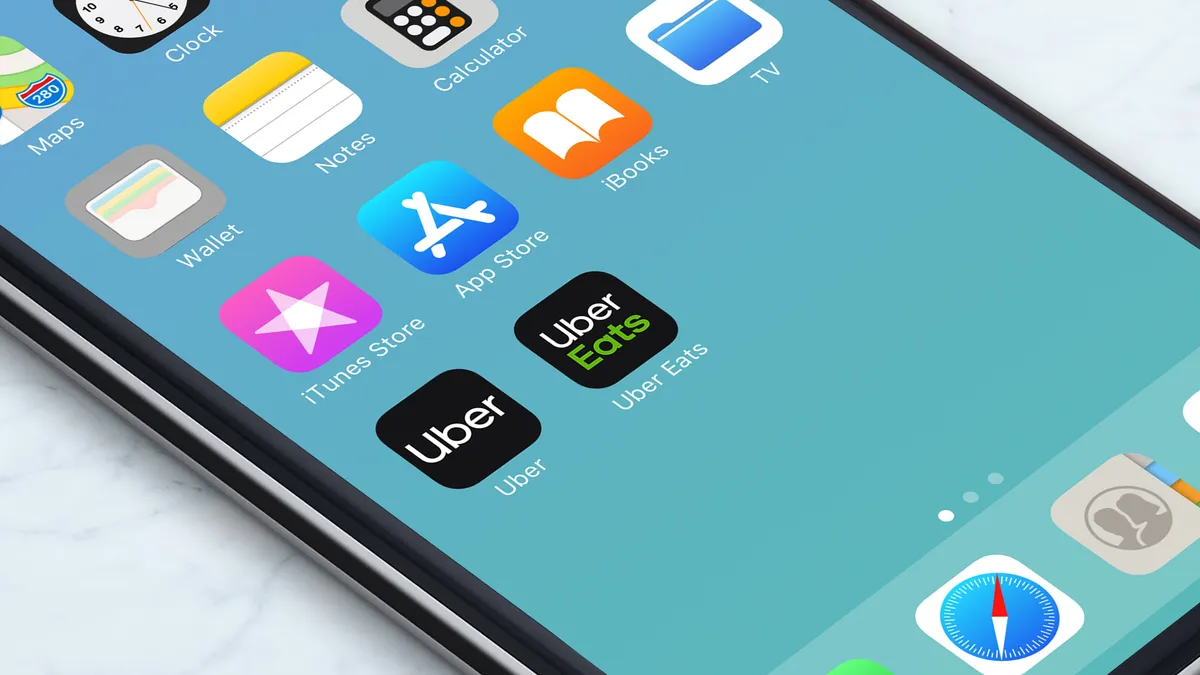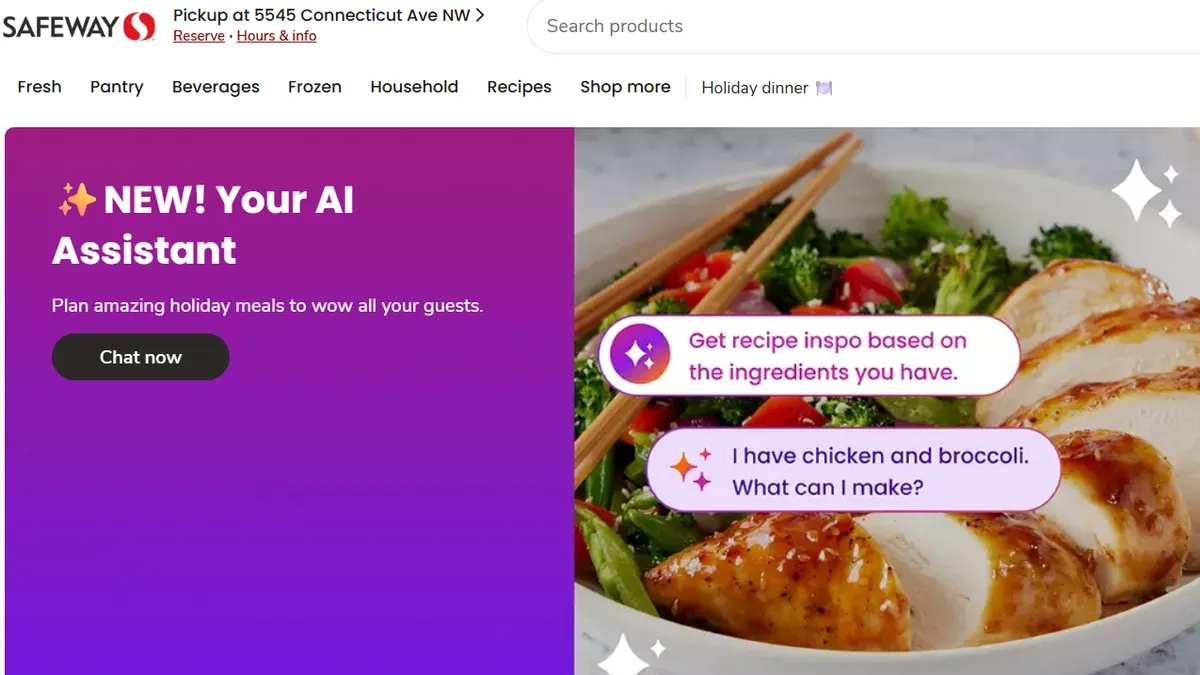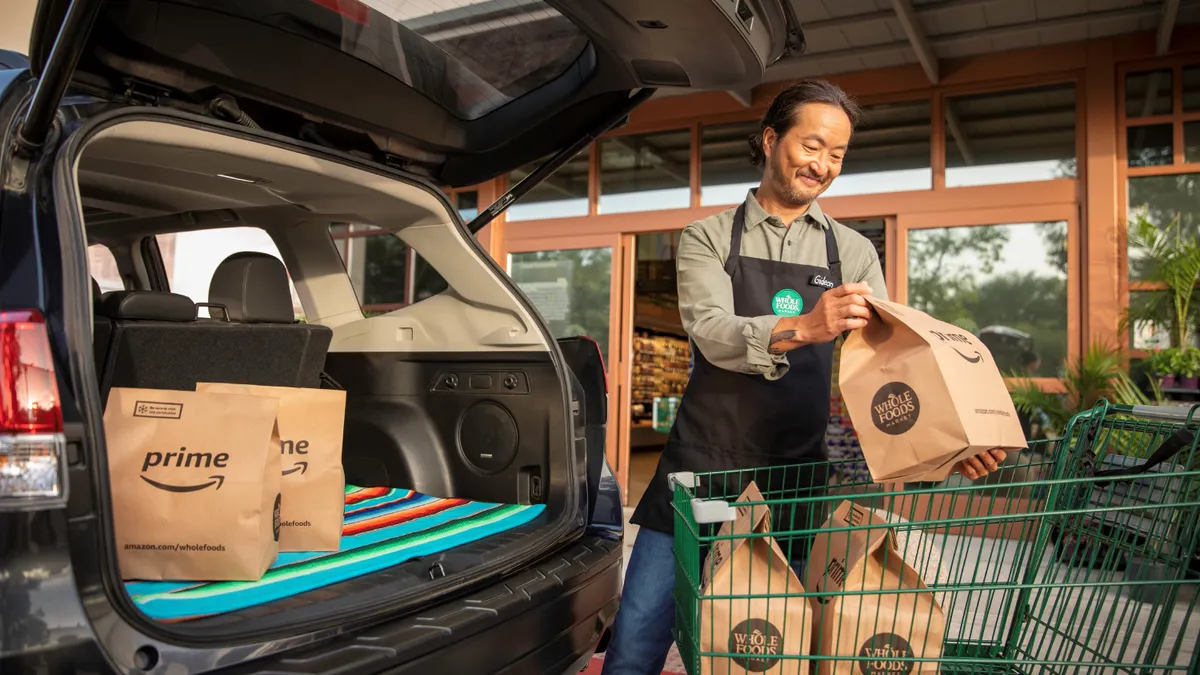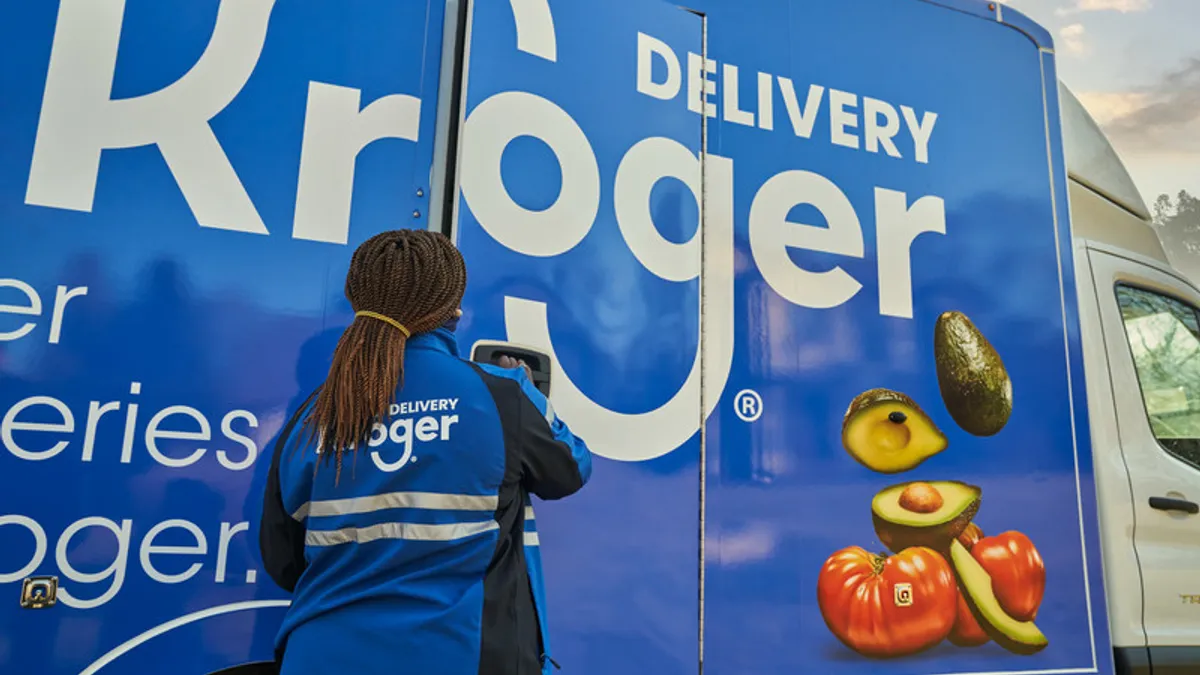After its ride hailing business cratered at the beginning of the pandemic, Uber quickly pivoted to food delivery by showcasing its popular Uber Eats restaurant delivery service to millions of homebound customers.
The maverick company also stepped up its rollout of grocery delivery — a service it has dabbled in for years but aimed to make a core offering following the acquisition of Cornershop, a Chile-based fulfillment company, late last year. This summer, Uber and Cornershop launched grocery delivery, available to consumers through the Uber and Uber Eats app, in 19 Latin American countries and Canada, as well as in Florida and Texas.
On Wednesday, Uber named its first official grocery chain partner in the U.S., Southeastern Grocers, saying it will offer delivery from the company's Winn-Dixie and Fresco Y Mas stores in Jacksonville, Orlando, Tampa and Miami.
Although Uber is late to the party, missing out on the surge in e-commerce demand this spring, the company maintains it’s playing a long game in an industry that has fundamentally changed. Raj Beri, Uber’s global head of grocery, said the firm, which is known for aggressive growth tactics, plans to rapidly expand grocery delivery across the country and allow retailers, many of whom currently lean on Instacart to fulfill orders, to tap into its base of more than 40 million users.
Beri spoke to Grocery Dive about Uber Grocery’s expansion, how consumer demand is evolving and what some extra competition in the online grocery marketplace means for retailers.
This interview has been edited for length and clarity.
GROCERY DIVE: Talk about your role and how it fits in with Uber’s grocery evolution.
RAJ BERI: I've been at Uber for around four and a half years. I started with our Rides business, and then I spent about three years running our Uber Eats businesses in Asia Pacific, Europe, Middle East and Africa. Earlier this year I took on a new role heading our global grocery business.
Last year we started to think really seriously about what could be the next phase for Uber in terms of some of the new areas we wanted to get into that were complementary to our core business, especially on the Eats side. And that's really when we started thinking about grocery more seriously. We're really looking at Uber Grocery as this global business, similar to Rides, similar to Eats, and we have fairly aggressive plans on a global scale. I think the acquisition of Cornershop, and that integration, which you've seen go live in a few markets and now globally, is the first phase of that.
Why acquire Cornershop as part of this grocery delivery push?
BERI: As we started talking about grocery, we realized we needed a strategic partner. And so we've been working with Cornershop over the last year and finally in July announced our integration with them.
Cornershop handles the picking and packing and the delivery. We've also leveraged all of Cornershop's technology on the merchant side. For consumers, it's really just a seamless experience. You open up our Rides app, you open up our Eats app, and there's Uber Grocery. If you're [an Uber Pass or Uber Eats Pass] subscriber, you get all your benefits applied to Grocery as well.
How did the pandemic impact Uber’s grocery plans?
BERI: We've been watching what the world has been going through, unfortunately, and over the last six months or so there's been huge, huge adoption that's pulling forward consumer behavior and also merchant adoption of online grocery delivery. The world has just fundamentally changed. We were starting to test things out late last year and in January. And then there was really just a huge responsibility we felt to accelerate our plans.
We've been working on grocery delivery and convenience and essentials delivery, and globally we had over 10,000 merchants on the platform offering some sort of grocery essentials type delivery outside of restaurant food. We saw close to 300% growth in that category since February. What we're seeing is a huge appetite from our consumer base that wants to participate, for the first time in a lot of cases, in online grocery delivery. And then, also, a lot of merchants started wanting to work more closely with players like us. So I think what we launched in July was just a natural extension of something that was already in the works.
Why begin the U.S. expansion in Dallas and Miami, and where does Uber go from here?
BERI: There's a few factors. We felt that Miami and Dallas presented particularly strong markets for us on the Uber Eats side. And they give us a good testing ground where we felt we could get some pilots going fairly quickly, as well.
I look at Uber Grocery in the same way I look at Uber Eats. We got into Uber Eats around five years ago, and now we're the largest food delivery business outside of China. We rapidly expanded once we tested out things and got a sense of what's working and what's not, and now we're just tweaking things. That's really our plan with grocery in the U.S., and there are plans to expand in the rest of the U.S. this year.
Who are some of the grocers that you're working with so far?
BERI: I won't get into the specifics of all the partnerships, but if you look across other players and open up their apps you'll see six or 10 grocers or so, depending on the user's location, and I think the overall selection and quantity [Uber has] is pretty comparable to what you'd expect from other apps. We have some specialty gourmet grocers, bakeries, things like that.
What we're really focused on is just making sure the customer experience is great, and making sure we're rolling this out in a way that makes sense. We do have a pretty significant investment and a pretty significant expansion plan through the end of the year.
Instacart, which sued Cornershop this summer, has been the main e-commerce partner for grocers up to this point. What are retailers looking for from a delivery provider right now?
BERI: I think merchants are looking for a really strong product and a proven partner that can generate incremental demand and revenue for them. We now have a company [Cornershop] that has done grocery delivery for five years plus and has built those merchant capabilities in everything from inventory management to pick-and-pack technology. So in addition to the consumer experience, there's a really strong merchant experience on our end that I would stack up against any of the main players.
Merchants are also interested in our user base. We have over 40 million users across the U.S. And if you look at Uber's regular users and you compare it to standalone players in a space like grocery, we feel very good that there's a strong user base that is very interested in trying grocery delivery for the first time, or will be trying grocery delivery for the first time.
Are grocers looking to work with multiple third-party delivery platforms?
BERI: We expect similar things with grocers to when we work with restaurants. When we got into the [restaurant] space, what we found was that when they added a second or third player onto their platform in terms of delivery, demand was incremental. That's really what merchants and grocers are interested in. And we're showing that the demand you can get through Uber Grocery is going to be incremental given the fact that we have an ecosystem in our base that is full of early adopters, and there are so many new-to-category users that will be coming on over the next 12 months.
Uber has been operating in a restaurant space that just seems cutthroat. Are you thinking about this in terms of knocking Instacart back on their heels a bit? Are you looking to rattle Shipt and Amazon?
BERI: We completely acknowledge that there are players in the U.S. already, like Instacart and Shipt. But one of the things we see is that, while it's a crowded space, this is not unlike how we approached our entry into food with Uber Eats around five years ago. We were not the first player in the space. We were not an incumbent in most of our markets, including the U.S.
This is a space where it is still very, very early days. And so while there are incumbents, if you look at the percentage of users in the U.S. that have tried online grocery delivery, it's still very, very small. We think most of the growth is going to come from new-to-category users, and that we're well-positioned to capture that.
What are some interesting behaviors you're seeing from consumers in the U.S.?
BERI: There's a real blend of what we call the top-up grocery use case and the stock-up grocery use case — more so than in other markets. So in addition to the one large grocery order that people may do once a week or once every two weeks for the family, more customers are ordering two and three times a week. And that top-up trip is actually sometimes the first foray for users into grocery delivery. We see an opportunity to leverage those use cases with our broader membership program on Uber and Uber Eats, since there's no delivery fee.
"This is a space where it is still very very early days. And so while there are incumbents, if you look at the percentage of users in the U.S. that have tried online grocery delivery, it's still very, very small."

Raj Beri
Head of global grocery at Uber
And then the other piece is, again, just lots of new-to-category users overall. In consumer surveys, there's a huge portion of users that say 'I haven't tried grocery delivery online yet, but in the next six months I am going to,' and a lot of that maps to our user base. We're seeing people wading into online grocery delivery for the first time, and we're seeing some traction of that in our markets that we've gone live with as well.
The restaurant space Uber Eats operates in is very promotional. Do you see the promotional landscape heating up in grocery due to the factors that we've discussed?
BERI: Probably not. When you're looking at grocery delivery versus restaurant delivery, I think groceries for most people are a necessity. And it was a necessity even before everyone had to stay at home. I think the behavior change is more of a technology behavior change that's going to happen in grocery versus a use case behavior change.
Uber acquired Postmates over the summer. Does that acquisition bring over any capabilities for the grocery delivery business?
BERI: That transaction is still very early days, and it's still going through all the approvals and everything, so there's nothing really to share on that.
How do you see the Uber Eats and Uber Grocery ecosystems interacting?
BERI: With Uber Eats, we were building off a Rides platform and a Rides use case, and it allowed us to quickly expand both operationally as well as just from a user base. We expect to see similar traction in the U.S. with Uber Grocery. I feel pretty good that our use case is actually very complementary to the use case that people are coming to Uber and Uber Eats for right now.
When you think about consumers using Uber Eats for food delivery, that translates very well to grocery. It's not a huge leap. Consumers think about food in a continuum, not discretely. [From] when someone wakes up in the morning to when they go to bed at night, there are multiple eating occasions. And our goal is to serve all of those eating occasions. Grocery delivery is another use case that is part of how families and how people think about their eating occasions.



















